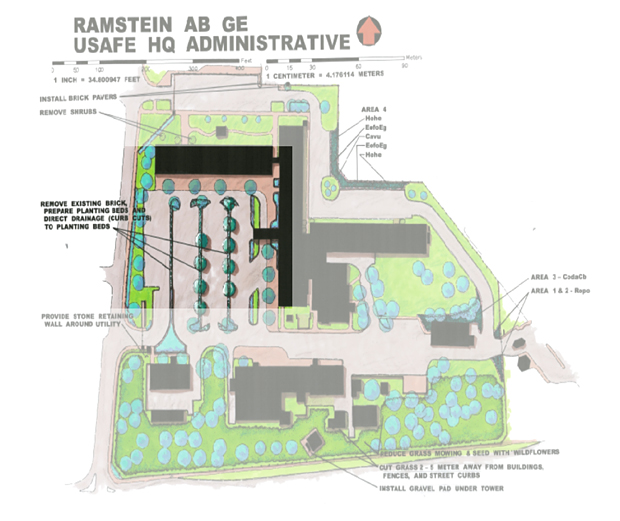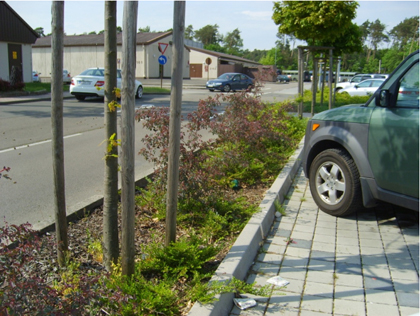
Parking islands, if properly designed, serve a number of purposes
beyond controlling traffic circulation within a parking lot. Parking
lots are, more times than not, constructed with impermeable
surfaces. Stormwater runoff rate and quantity increase due to
impermeable surfaces resulting in channel flow and erosion.
Pollutants emitted from vehicles are also carried away in runoff,
damaging adjacent watersheds and aquatic habitats. This section
explores sustainable strategies that may be implemented to improve
the functionality of a parking island.
Sustainable strategies such as
rain gardens,
tree wells and dry
wells are effective methods to reduce stormwater runoff and
pollutants through evapo-transpiration and/or infiltration. These
methods may be implemented into a wide variety of applications
including existing parking islands. Slope and grade of parking lots
should be designed to direct water to the rain garden, tree well,
etc. Curb surrounding a parking island may also be partially or
fully removed. Ensure parking island vegetation does not cause a
safety hazard by obstructing driversí views of other cars or
signage. See the rain garden and tree well pages for more
information regarding these sustainable strategies.

Figure 1. Parking lot improvement design at Ramstein AB
Parking
island improvement expenses may be offset by the reduced need for
conventional stormwater systems such as drain inlets and culverts.
Expenses to remediate pollutants and erosion may also be avoided.

Figure 2. Well designed parking improvements at Ramstein AB
Improving the function of parking islands is a potential strategy
to achieve the intent of LEED SS Credit 6.1 and SS Credit 6.2. Refer to the LEED Guidance section for specific requirements.

|

